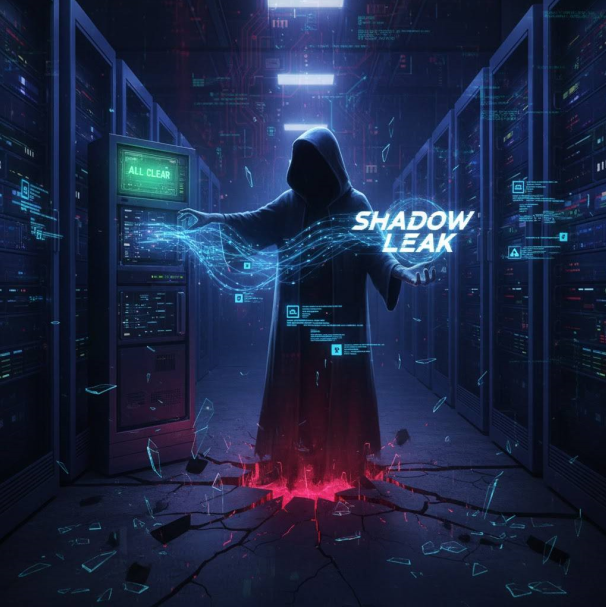The Quiet Side of AI Risks
The pace of AI development is wild; one week you're impressed, the next you're reading about an LLM doing something that makes you want to pull the power cord. Among the latest examples is Shadow Leak, a vulnerability that changes how we think about prompt injections.
Unlike previous cases where the user triggered the problem, this one happens on the service side, no user interaction, no trickery, no "click this weird link." It's what researchers are calling a zero-click, indirect prompt injection, and that's a first.
What Is "Shadow Leak"?
In simple terms, Shadow Leak is a vulnerability that lets an attacker inject malicious instructions into an AI model through the service's own backend processes, not the user's input.
Here's the short version:
- The attacker plants hidden instructions or data in an external source (like a document or database).
- The AI service fetches that data as part of its normal operation.
- The model "reads" those injected instructions and acts on them — sometimes exposing confidential info or performing unintended actions.
- The "shadow" part comes from the fact that these injections hide in places the service trusts by default — think of them as stealth commands living in plain sight.
Why This Is a Big Deal
Shadow Leak effectively removes the need for user interaction — the attack vector sits upstream, meaning that even the most careful user can be affected.
It blurs the line between application logic and model logic. Before, developers could say: "Just sanitize the user input." Now, the problem can originate inside the trusted system itself — API calls, file parsing routines, automated summaries, etc.
That's what makes it service-side: the vulnerability lives in the integration layer, not the user-facing chat box.
Potential Impact
A successful Shadow Leak attack can:
- Expose sensitive internal data processed by the model.
- Manipulate automated responses or business logic.
- Cascade through connected systems that rely on LLM outputs.
In other words, this isn't just about bad answers, it's about data exfiltration and systemic manipulation.
Mitigation and Defense
Defending against this kind of attack requires a shift in mindset:
- Validate all AI inputs, even those generated internally or pulled from "trusted" sources.
- Separate system instructions from user content to prevent context blending.
- Use response filtering and output sanitization before exposing model results.
- Monitor model behavior for anomalies or context drift, just as you would monitor a network for intrusion.
Security teams should treat LLM integrations like any other high-risk component — log, test, audit, repeat.
Conclusion
Shadow Leak is more than just another fancy name in the AI security news cycle, it's a reminder that as our tools get smarter, so do the risks.
The boundary between code and conversation is dissolving, and that means vulnerabilities can appear where we least expect them.
Staying ahead requires the same mindset that's always worked in security: Don't Trust The Interface, Trust The Process.

